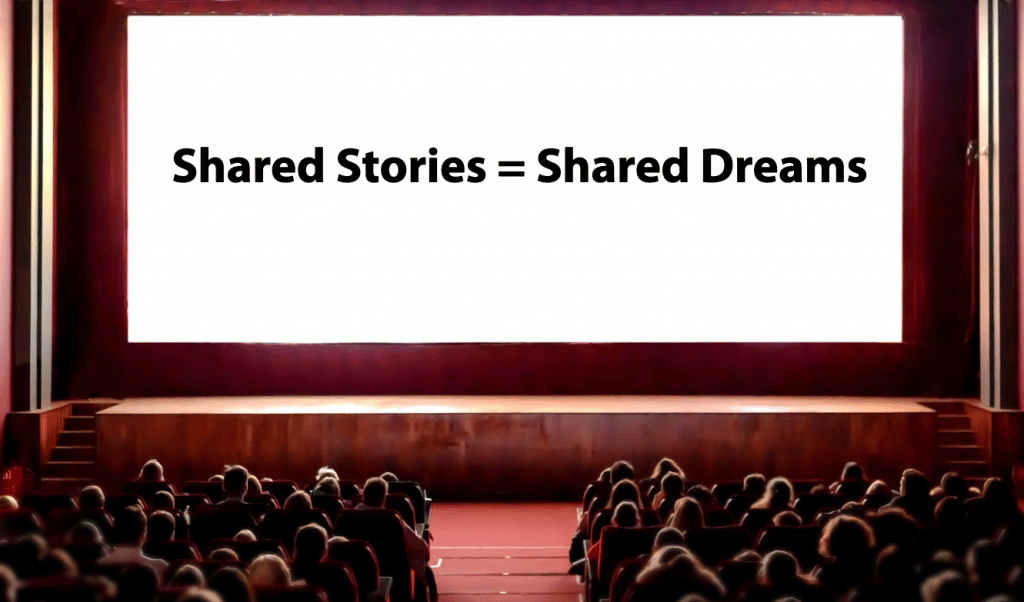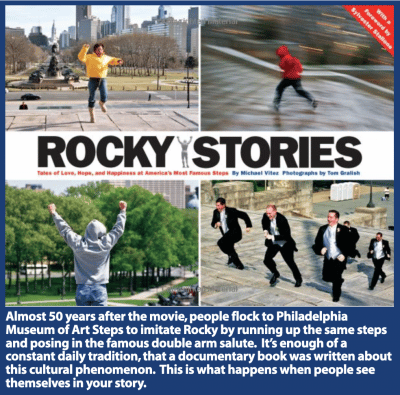
My youngest daughter was watching Jaws the other night when this “bonding” scene came on as I walked through the room:
This is the scene that immediately precedes Quint’s story about the U.S.S Indianapolis.
And I want you to note three things about it:
- The characters bond by sharing stories
- The stories are about battle scars, not successes or victories
- The stories establish a commonality between Quint and Hooper
This leads to Quint sharing the “big story” — the one about the U.S.S. Indianapolis — centered around an emotional wound, rather than a physical scar.
There’s a reason why that “big story” is one of the most referenced scenes in the film: not only is it riveting, but we learn quite a bit about what makes Quint “tick” from that story.
This works in the movies because it’s true to real life. We bond with each other by sharing stories.
Granted, we often do this while also sharing a meal or drinks, adding a sacramental element to the experience, but stories are what glue us together.
A meal without stories is an awkward affair, rather than a bonding moment.
And the stories that work best are stories about sacrifice or loss or painful discovery.
Then there’s the real magic…
The real magic is when people recognize themselves in your stories.

Their stories don’t have to be identical to yours, but they have to have common, relatable themes.
People identify with Rocky, not because they too have boxed 15-Rounds with the Champ, but because they too have been counted out and had to battle through as “underdogs” trying to achieve self-respect.
That’s because the best stories are shared stories. Stories that tap into archetypal themes, characters, and values.
These are the stories that dreams are made of.
And once shared over mass media, those kinds of resonant stories become a communally “shared story” that permeates the culture.
This is how the characters and scenes in stories achieve a kind of fame that drives extraordinary advertising results.
Why Is This Power Technique So Rarely Used?
So why, then, do so few ads feature the business owner simply telling stories?
And why do so few such stories end up being about vulnerability, setbacks, or scars?
Because it takes an uncommon level of guts and skill.
Oh, and also time.
-
- Guts on the part of the business owner who is called on to reveal vulnerabilities and life stories.
-
- Skill on the part of the copywriter who has to recognize a great story when he hears one, and is then capable of crafting it to bring out the archetypal themes.
-
- And time in the sense of investing in longer-form 60-second spots rather than 30s, but also in patiently waiting for results over time, rather than demanding a direct response.
Now, I’m not saying you can’t tell a compelling story in 30-seconds…
I’m saying it’s twice as hard as doing it in 60-seconds, which is already a challenge to do well.
Unfortunately, most advertisers balk at the extra expense and difficulty of buying 60s.
And this is one reason most advertisers achieve middling results.
But if you have the guts, you can get magical results by bonding with customers using a story-based campaign.
And the best way to launch that campaign is by telling your origin story.
So if you have the guts to tell your real story — the one that’s yours and yours alone — contact me, and we’ll create a campaign that dreams are made of.
- Getting a Foot in the Door — Of Perception - November 27, 2025
- What Digital Superstars Know About Offline Advertising - November 17, 2025
- Unmistakable: A Tale of Two Boots and Branding Done Right - November 8, 2025
